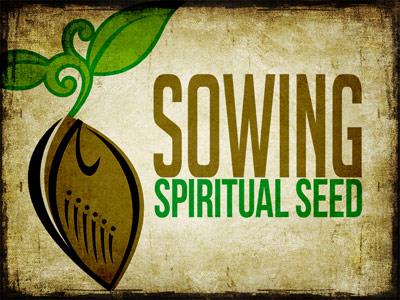-
"beware Of The Leaven Of The Pharisees And The Sadduccees And Of Herod"
Contributed by Claude Alexander on Jun 12, 2019 (message contributor)
Summary: Warning of Jesus when He said "beware of the leaven of the Pharisees and the Sadducees and of Herod" -
Get rid of Leaven.
We are looking into the warnings of Jesus when He said "beware of the leaven of the Pharisees and the Sadducees and of Herod" - Matthew 16:6-12; Mark 8:15 and we shall also look into the Parable of the Leaven to understand the background of the meaning of leaven.
In Matthew 13, we see how Jesus Christ used parables to foretell certain situations that would affect God's church down through the centuries until His second coming. In the Parable of the Mustard Seed, He forecasts that the church would begin small and that evil, outside adversaries would try to subvert it from within. In the Parable of the Leaven (Matthew 13:33; Luke 13:20-21), He forewarns of internal doctrinal distortions.
Matthew 13's first four parables, which are in two pairs, all consistently reveal the church's future progress: In the Parable of the Sower, God's Word is rejected. In the Wheat and Tares, God's work is opposed. In the Mustard Seed, attempts are made to thwart God's plan. In the Parable of the Leaven, God's doctrines are corrupted.
Looking into the parable of the Leaven - What does leaven represent? (Matthew 13:33; Luke 13:21)
Physically, leaven is a lump of old dough in a high state of fermentation, or a substance that causes dough to rise (yeast). A natural reason for leaven's negative symbolism is the idea that fermentation implies a process of corruption. In the Old Testament, it is generally symbolic of sin and evil. In every instance that leaven appears in the Bible, it represents evil. Only in two places in Scripture is its use commanded - Lev. 7 :13 and Lev. 23 :17. Knowing its Old Testament significance, however, I believe Jesus would have used the symbol in the same way. The common meat offering was unleavened, part of which was burnt on the altar, where no leaven might be burnt, ( Leviticus 2:4 Leviticus 2:5 Leviticus 2:11 ) ; and from this it may be concluded that no part of these loaves was to be burnt, but the whole of them became the share of the priests: With the wave-sheaf no leaven was offered, for there was no evil in Christ; but the wave-loaves, typifying the church, are "baked with leaven," there is still evil. After Pentecost the church stands for both the Jew and the Gentile. Two loaves but one offering. God's plan was that the Jew and Gentile will worship the Lord as one body.
And what happened on the Day of Pentecost in Acts 2?
A new body was formed, the body called the Church, made up no longer simply of Jews alone but of Jews and Gentiles -- two loaves baked with leaven. This was not the old Judaism re-formed but a totally new entity - a brand new creation born of the Spirit but still tainted with sin.
While some commentaries interpret this parable as depicting the spreading influence of the gospel, such explanations go against Jesus' use of this symbol. He uses it to refer to the evil doctrine of the Pharisees, the Sadducees, and of Herod (Matthew 16:6-12; Mark 8:15), and this could easily apply to later corruptions of doctrine by those who place more importance on the traditions of men than on the Word of God.
Paul uses leavening as a type of sin in its development (I Corinthians 5:6-8). His reference to Christ's sinless sacrifice, and his statement that believers, as such, are unleavened shows the typical significance of leaven. In Galatians 5:7-9, its diffusive quality describes the harmful effects of false doctrine. He calls leaven a persuasion, something that exerts a powerful and moving influence, which hinders people from obeying the truth. Such a thing, he declares, is not from Him who calls us.
Lets take a brief view of the parable of the Leaven. Matthew 13:33; Luke 13:21
The woman in the Parable of the Leaven is interesting because in all the other parables a man is the main character. What is "a woman" in Scripture?
In Revelation 12, a woman is symbolic of the nation of Israel, and in Revelation 17 and 18 she represents the false system of Babylon. In Isaiah 47, a woman is again symbolic of Babylon (whether the nation or the system of Babylon). In Galatians 4:21-31, Paul uses "women" to symbolize the Old Covenant and the New Covenant. In Ezekiel 16, God uses a woman to symbolize Israel: "Aholah" is the kingdom of Israel and "Aholibah" is the kingdom of Judah.
What can we understand from this? Every time a woman is used as a symbol, the common de-nominator is the idea of a system of beliefs and practices that influence other people. A church or religion is a system of beliefs and practices. This world as a whole has a system of beliefs and practices that go contrary to God. To find out what kind of system is being referred to, we must look at the context to see how the system works, how it reacts, and what it does.

 Sermon Central
Sermon Central

